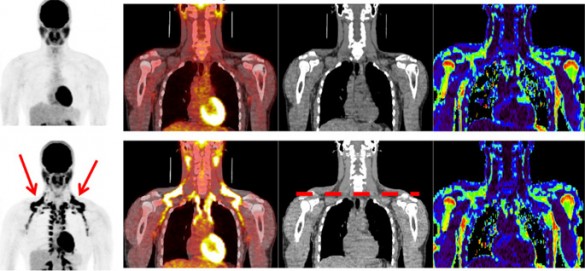by Anne Meyer
Flow of fluids through the gut, such as milk from an infant’s diet, generates a shear stress on cells lining the intestine. Ken Lau, Ph.D., and colleagues have demonstrated that microvilli – finger-like membrane protrusions – are capable of sensing shear forces and subsequently drive an intracellular response called autophagy.
Autophagy is a natural process that degrades and recycles cellular components in order to restore nutrient balance. Autophagy also plays a role in transport, secretion, and microbial clearance. Defects in autophagy can contribute to intestinal diseases such as inflammatory bowel disease.
The investigators report that mechanical stimulation of microvilli by fluid flow triggers components of the autophagy pathway and large vacuole formation in intestinal epithelial cell cultures.
The findings, reported in Molecular Biology of the Cell, provide the first evidence that microvilli possess mechanosensing ability and implicate a novel link between fluid flow shear stress and the autophagy pathway. This work also sheds light on how the infant gut senses contents and avoids disease.
This research was supported by grants from the National Institutes of Health (DK103831, DK048370, DK070856, DK075555, DK095811, DK058404, CA095103), Crohn’s & Colitis Foundation, VICTR (TR000445), and an innovator award from the AACR-Landon Foundation.
Send suggestions for articles to highlight in Aliquots and any other feedback about the column to aliquots@vanderbilt.edu















